Fox News Flash top headlines for August 3
Fox News Flash top headlines are here. Check out what's clicking on Foxnews.com.
A mother is alerting parents and caregivers about a little-known danger involving children climbing into hot cars, as two children have reportedly died in recent weeks under similar circumstances.
"The more I talked, the more I realized that this was rare — a child getting into a car," Jenny Stanley, a mom of three from Alpharetta, Georgia, told Fox News Digital of publicly speaking out about her own family’s tragedy.
"[Other parents] have said, 'It never crossed my mind that this could happen.'"
She added, "I didn’t think about it either — before it happened to us."
Last month, a 2-year-old boy died after being found in his family’s unlocked car in North Carolina.
Police say it’s unclear how the boy got into the vehicle in the first place. The boy died in the hospital a week after the incident, according to the Associated Press.
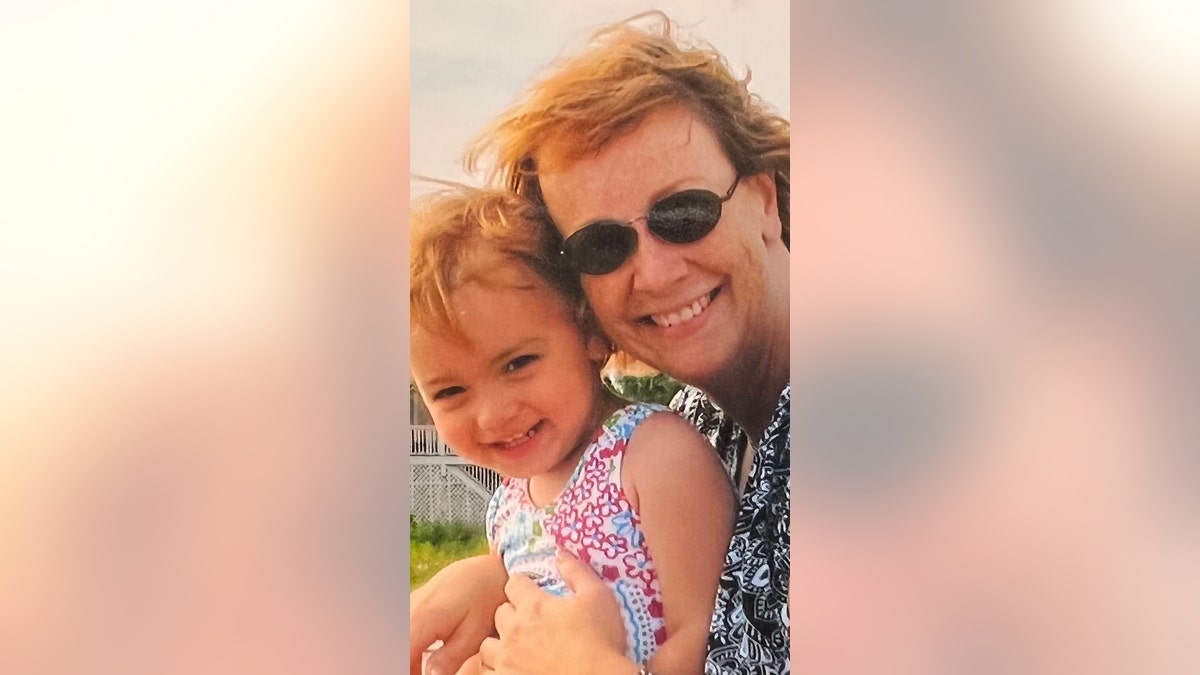
Little Sydney Stanley with her mom, Jenny Stanley. Sydney tragically died in 2010 after she became trapped in a hot car at her family's home. (Jenny Stanley)
On July 31, 2022, another 2-year-old died after being found unresponsive inside a car in Scranton, Kansas, as Kids and Car Safety shared in a news release.
The Osage County Sheriff's Department in Kansas said signs suggest the death may have been heat-related. The department confirmed the child was not left in the car, according to Kids and Car Safety.
"Nobody really knows the real reason why children get in on their own because we can’t ask them."
Children may enter vehicles on their own while exploring, playing games like hide-and-seek or for other circumstances, Amber Rollins, director of Kids and Car Safety, told Fox News Digital.
"Nobody really knows the real reason why children get in on their own because we can’t ask them," Rollins said.
"But, in Jenny [Stanley’s] case, she does believe she knows."
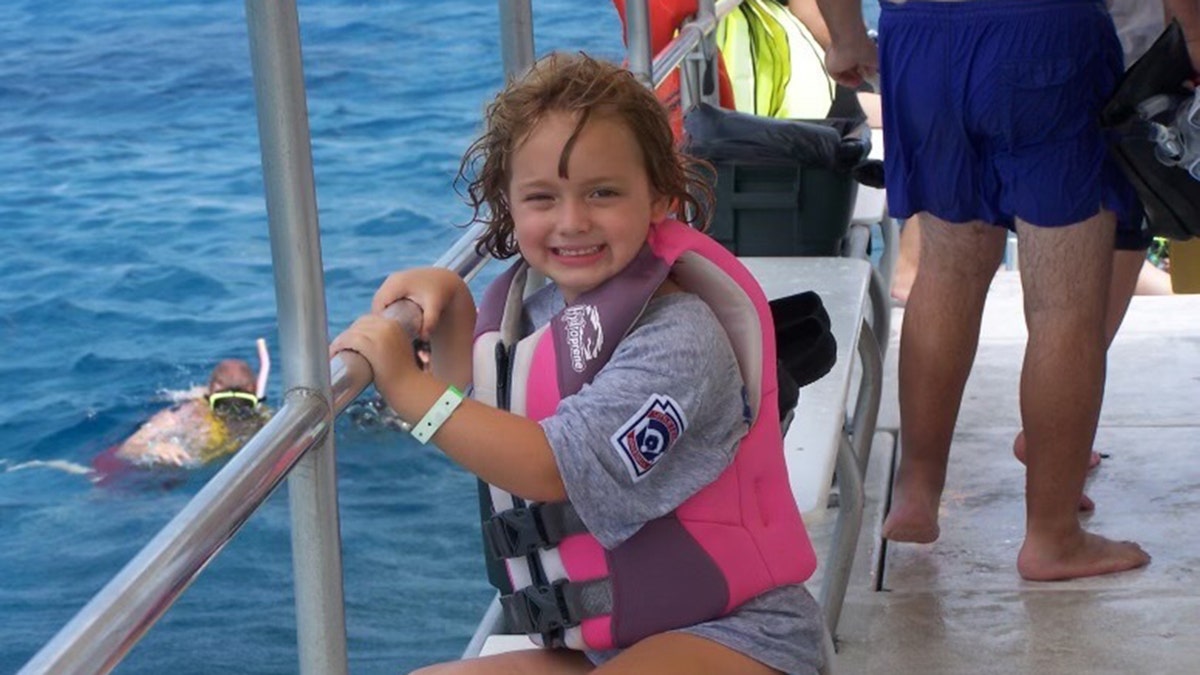
Young Sydney Stanley is shown posing on a boat during a family vacation. (Jenny Stanley)
Sydney Stanley was just 6 years old when she died after climbing into a hot car 12 years ago.
Stanley describes her daughter as being "full of happiness," "a princess some days and a tomboy the other days."
"She was very definite about what she wanted and what she didn’t. It was very clear-cut," Stanley said. "And when she would get upset, she would say, ‘Someone hurt my feeling.’ Not her ‘feelings' — her ‘feeling.’"

Sydney is photographed while playing in her team softball league. (Jenny Stanley)
Stanley shared another example of Sydney’s "spunky" character.
"One time, she had a friend rubbing her feet and reading to her. I don’t know how she managed [to get her friend] to do that," said the mom.
Sydney also developed a passion for dance, something she began at the young age of 3.
"She finally got to do hip-hip and when I picked her up, she said, ‘That was my best day,'" Stanley recalled.
"She died that following Sunday, so she never got to do her hip-hop again …only once."

Sydney poses wearing sunglasses and a feather hair accessory. Her mother told Fox News Digital that the child loved dance and softball. (Jenny Stanley)
The day of the tragedy, on Aug. 22, 2010, Jenny Stanley had been running errands with her eldest son Logan (who was 12 years old at the time) while Sydney played at a neighbor’s house.
At one point, Stanley's husband Mike asked their middle child Mason (10 years old at the time) to go next door and let Sydney know it was time to come home.
When they realized Sydney was not next door, her father got in the car to drive around the neighborhood to look for her. As he was getting into the car — he found Sydney in a fetal position on the back passenger-side floor board.

The Stanley family — Mike (at far left), Jenny, Logan, Mason and Sydney (in front) — pose with Santa Claus for a family Christmas photo. (Jenny Stanley)
A family friend reached Jenny Stanley, who was halfway home.
When she arrived, police and an ambulance were in front of her house.
Paramedics were working on her daughter Sydney, she said.
"It was almost like slow motion," she told Fox News Digital. "I remember them working on her and I remember screaming, ‘Don’t stop [working on her].’ It was just shock. It was slow-motion shock. It just didn’t make sense. It was almost like, ‘This cannot be happening.’"
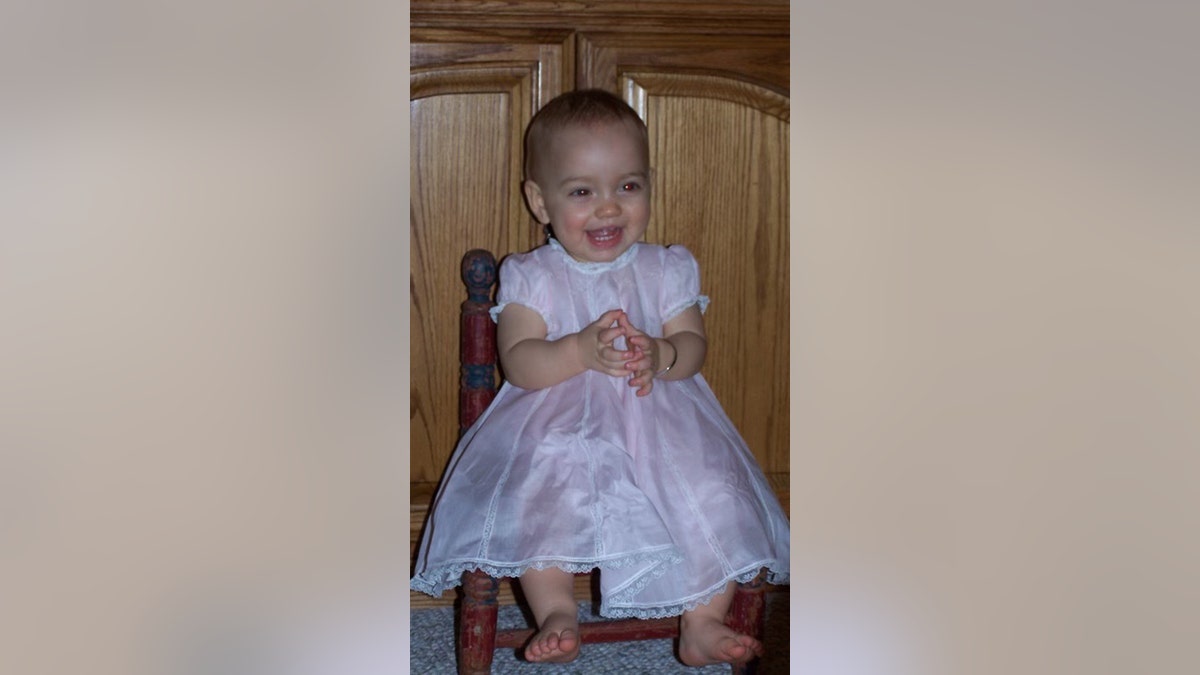
Sydney as a baby, wearing an adorable pink dress. (Jenny Stanley)
"Mike and I went into the ambulance and each held [Sydney’s] hand and I remember looking out the back of the ambulance seeing my two boys … I remember looking at Mike and saying, ‘We need to take care of them right now,'" she added.
"That was the hard part of it."
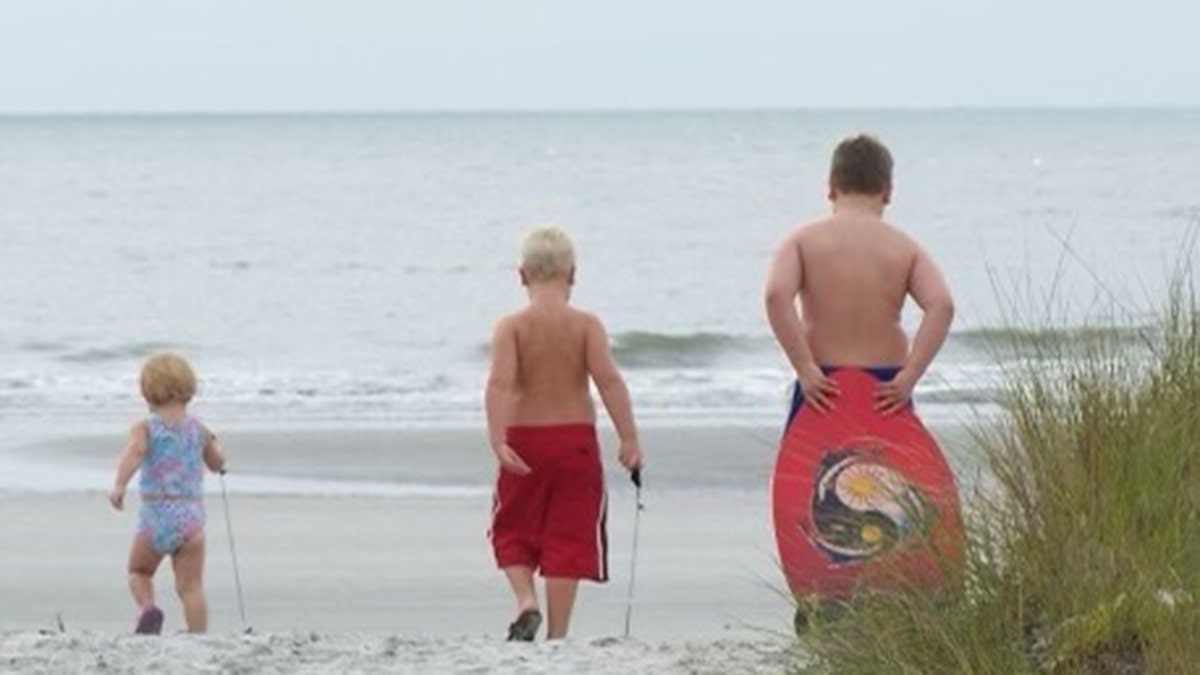
Georgia siblings Sydney (at far left), Mason and Logan walk along a beach when they were young children. (Jenny Stanley)
Stanley suspects that Sydney returned home to enter her family’s vehicle and retrieve a craft that she had started earlier that morning at church Sunday school.
"It's hard to grieve and then be happy, if that makes sense," Jenny Stanley added in reference to being strong for her sons.
"We still did baseball and all that stuff, we went forward — but always missing her."
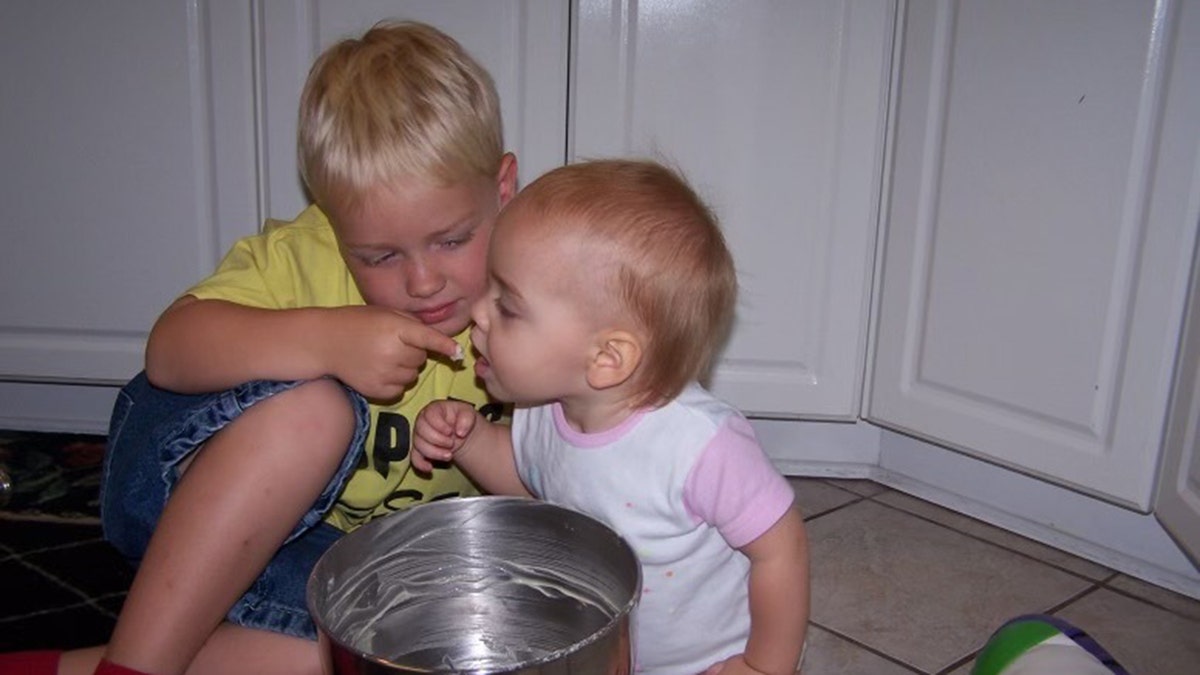
Sydney loved her "brutters," also known as her "brothers," her mom said. In this image, big brother Mason is feeding little Sydney. (Jenny Stanley)
The hot car deaths of children vary by circumstance. From 1990 to 2021, 56% of children who died in a hot car-related incident were unknowingly left in the vehicle by a driver.
Children sometimes gain access to vehicles on their own (26%) — and accidentally become trapped inside.
PENNSYLVANIA BABY BOY DIES IN HOT CAR INCIDENT: WHAT PARENTS NEED TO KNOW NOW
In very few cases, the circumstances are unknown (3%), while in 15% of cases, the children were knowingly left in the vehicle, according to data reported by Kids and Cars Safety in February 2022.

Little Sydney is pictured in a memorial collage shown here. (Jenny Stanley)
This year, at least 14 children have died in hot car-related incidents, according to Kids and Car Safety. The national nonprofit works to prevent injuries and deaths of children in and around motor vehicles.
Kids and Car Safety reports an average of 38 hot car deaths per year — or one every 9 days.
Following Sydney’s death, her preschool build a garden in her memory and included sand from the playground where she often spent time.
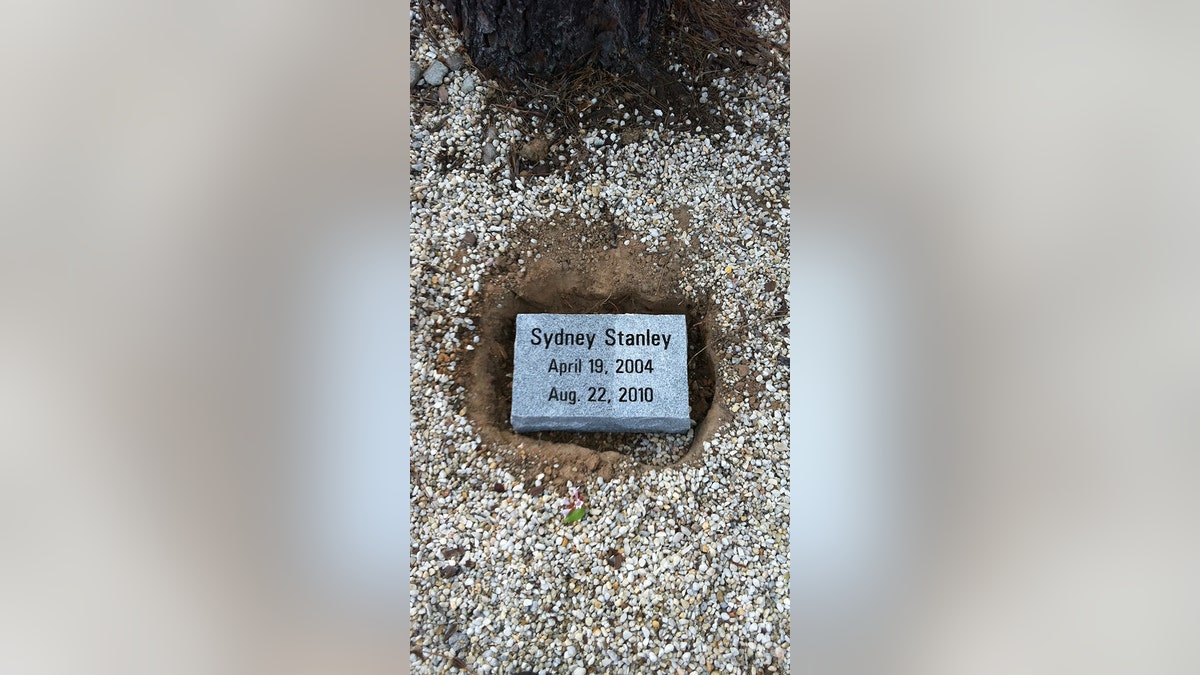
Seen in this image is a plaque dedicated to Sydney Stanley, who died in a hot car accident at the age of 6. (Jenny Stanley)

Sydney's preschool build a garden in her memory. (Jenny Stanley)
Jenny Stanley has since worked with Kids and Car Safety by opening up about her child’s death in the hope of educating other parents and caregivers about the dangers.
Occupant detection
In November 2021, Congress passed the Infrastructure Investment and Jobs Act; President Biden signed it into law.
It includes a provision that addresses hot car tragedies by requiring an audio and visual reminder alert to check the back seat in new passenger vehicles.
NYC DOG TRAPPED IN HOT CAR ENDURES MONTH-LONG RECOVERY, FINDS HOME WTIH POLICE OFFICER
It does not specify the requirement for the system to detect that a child is alone in a car — otherwise known as occupant detection. That's according to a release from Kids and Cars that was shared with Fox News Digital.
"What happened to Sydney is one of those predictable, preventable things … Knowing that there is technology out there that could've saved Sydney's life is almost too much to bear."
Rollins said Kids and Car Safety’s number-one priority is stressing the importance of requiring occupant detection in all new vehicles. Currently, the provision calls for an "audio and visual reminder alert to check the backseat."
Occupant detection uses motion, radar, LIDAR (light detection and ranging), carbon dioxide sensing and more to detect the presence of a person inside a vehicle.
Audio and visual reminders to check the backseat do not offer the same technology.

Sydney sits on the floor of her family's home when she was a baby. (Jenny Stanley)

Sydney was "full of happiness," her mother told Fox News Digital. (Jenny Stanley)
The NHTSA (National Highway Traffic Safety Administration) has two years to test, study and decide if it will require that new vehicles have occupant detection.
It's a system that would cost automakers roughly $50 per vehicle, Rollins told Fox News Digital in July after the nation’s 11th hot car death in Florida.
Stanley said she feels strongly about all new vehicles adding the occupant detection feature.
"Sydney’s life would’ve been saved, I’m convinced, if [vehicles] had that," Stanley said.
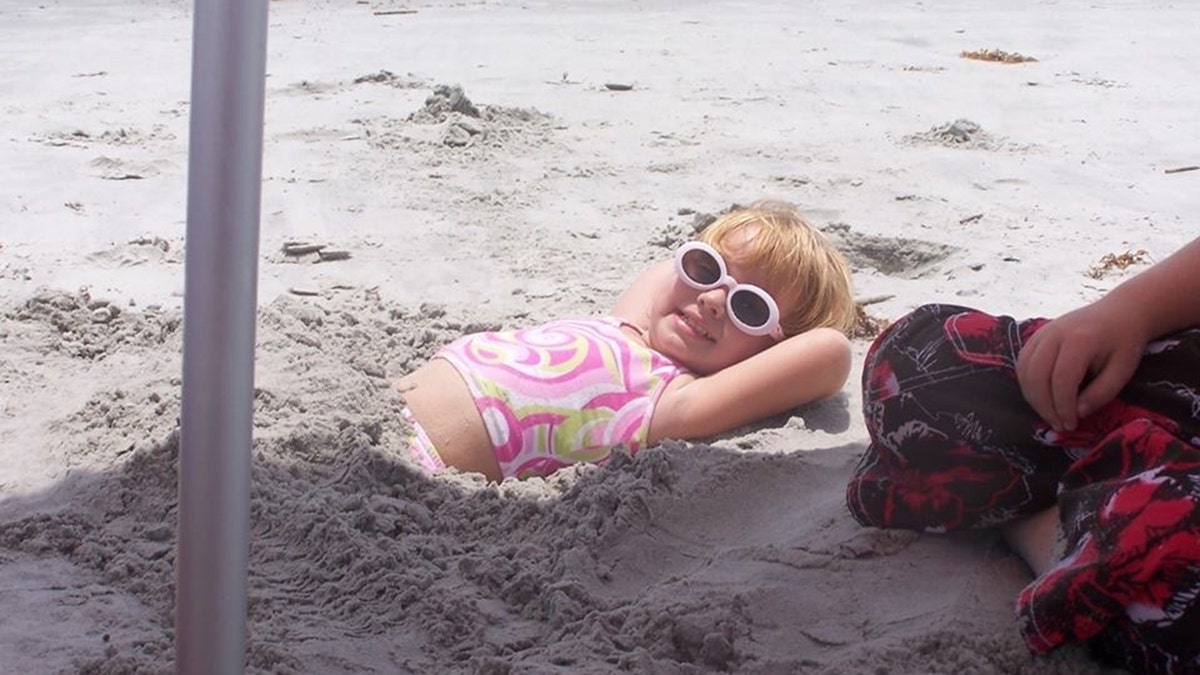
There have been at least 14 hot car deaths in 2022, with two of the children having gotten inside the cars on their own. In 2010, Sydney Stanley died under the same tragic circumstances. (Jenny Stanley)
"You’re telling me it’s more important for your car to tell you that your interior light is on than telling you that your child is in there? Or your seatbelt is not on?"
"I think it needs to be standardized," she said. "I think it needs to be tested."
In a statement emailed to Fox News Digital in July, a NHTSA spokesperson wrote, "Losing a child to vehicular heatstroke is heartbreaking, and no parent should have to experience this tragic loss of life," the group said.
It added that hundreds of children have died due to pediatric vehicular heatstroke over the last 24 years.
"That’s why NHTSA, in response to the Bipartisan Infrastructure Law, is undertaking a new rulemaking initiative (2127-AM49). This initiative directs NHTSA to issue a final rule requiring rear-seat occupant detection systems in all new passenger vehicles."
"We are a normal, regular family who goes to church, the kids played sports, Sydney took dance lessons. It can happen to anybody."
"The alert required shall include a distinct auditory and visual alert, and will be activated when the vehicle motor is deactivated by the operator," the spokesperson continued.
"The agency will also conduct studies on the potential retrofitting of existing passenger motor vehicles with rear-seat occupant detection systems, as well as the potential benefits and economic burdens associated with those technologies."
NHTSA said that beginning in fiscal year 2024, states will be permitted to use Section 402 funds "for heatstroke prevention activities under the law."

Sydney holds a baby doll while posing for a post-Christmas photo. (Jenny Stanley)

Little Sydney Stanley. Mom Jenny Stanley is now working with Kids and Car Safety to raise awareness about hot car dangers and kids. (Jenny Stanley)
In the meantime, Stanley said she wants to continue educating others in Sydney’s memory. "It’s never going to bring her back, but it's something [I have to do]," she said.
"Just be careful," she added in an urgent message to parents.
"We are a normal, regular family who goes to church, the kids played sports, Sydney took dance lessons. It can happen to anybody."
Tips for protecting children
Parents should warn their children that the inside of a car is dangerous, Rollins said.
"It's like an oven," she explained. "It's very hot and we don't touch it."
"The inside of a car is very hot, and it's never safe to be in there without a grown-up."
Rollins said if appropriate for the children's age, parents should show them how to open the car door from the inside.
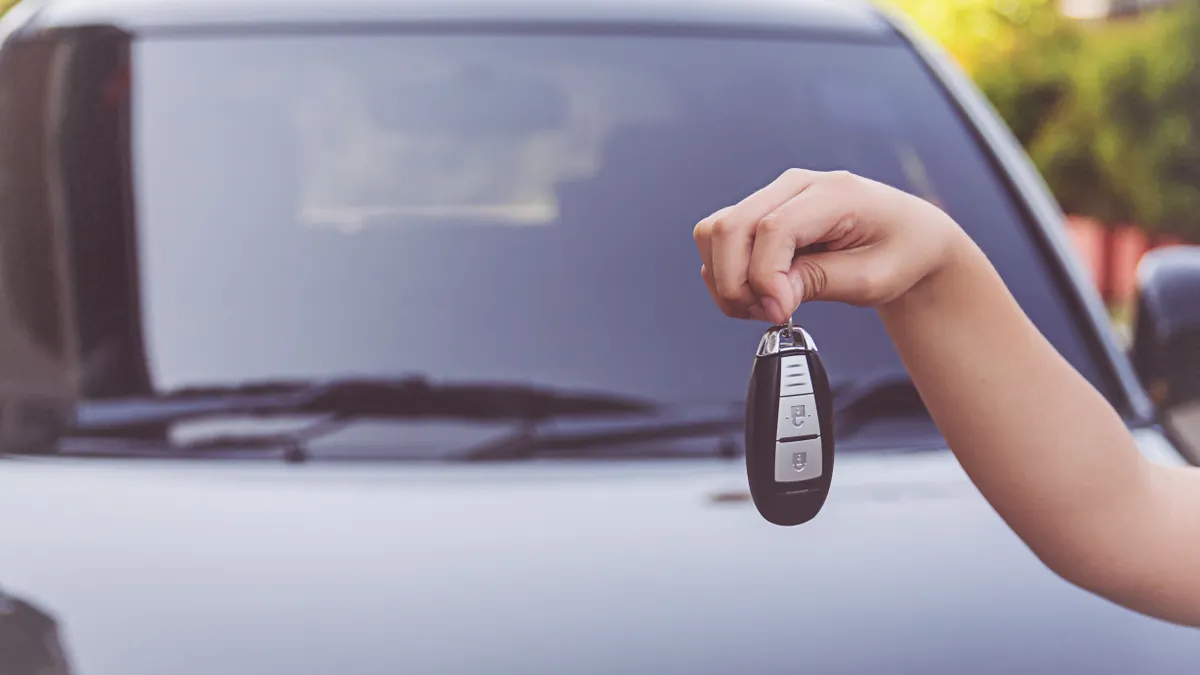
Be sure to keep car keys out of the reach of kids, as little ones can accidently become trapped inside a car. (iStock)
"Parents should be aware that young children may not have the cognitive ability or fine motor skills to be able to open a car door from the inside," she noted.
Rollins also said to allow child to practice honking the horn — and explain to them why.
CLICK HERE TO SIGN UP FOR OUR LIFESTYLE NEWSLETTER
Stanley echoed this tip: "Teach them to lay on the horn if they're trapped and can't get out," she said.
More tips to keep kids safe
Show children how to stay visible in the window, so that someone can see them and save them, suggested Kids and Car Safety.
Teach children to honk the horn or turn on hazard lights if they become stuck inside a car.
"Parents should be aware that young children may not have the cognitive ability or fine motor skills to be able to open a car door from the inside."
Also, keep vehicles locked at all times, especially when the car is sitting in a garage or driveway. You do not want children to get into a parked car by accident.
Ask your neighbors and visitors to keep their cars locked as well.
Also, never leave car keys within reach of children.
ONLINE DANGERS ARE RAMPANT FOR KIDS TODAY — WHY PARENTS MUST KEEP THEM CYBER SAFE
Use childproofing knob covers and door alarms to prevent children from exiting your home unnoticed.
If a child is missing, immediately check the inside of the car, its floorboards and the trunks of all vehicles in the area carefully, even if they’re locked.
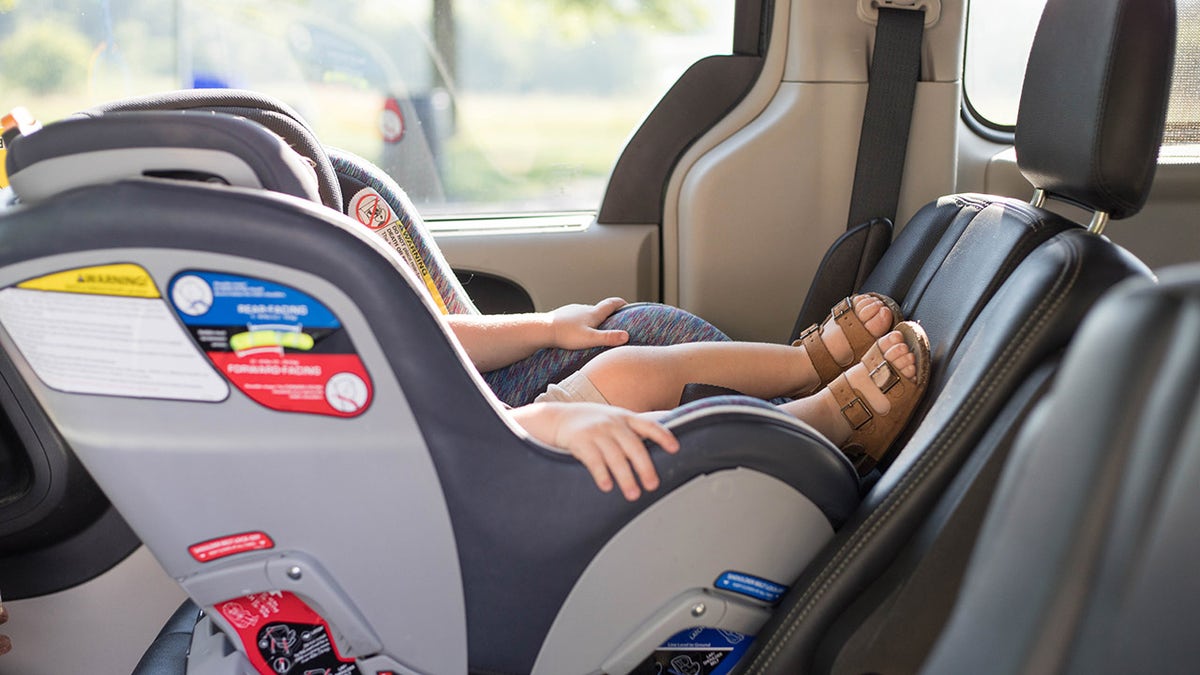
Stanley suggests that parents leave one shoe in the backseat as a reminder of traveling with children. (Kids and Car Safety)
The NHTSA advises locking car doors and trunks year-round so that children cannot get inside.
"If you see a child alone in a locked car, get them out immediately and call 911," the agency states on its website.
"A child in distress due to heat should be removed from the vehicle as quickly as possible and rapidly cooled," the agency says.

"It’s never going to bring her back, but it's something [I have to do]," said Jenny Stanley about raising awareness of car dangers in memory of her daughter, Sydney. (Jenny Stanley)
To help ensure that your child is never left alone in a car, place the child’s diaper bag or other item on the front passenger seat next to you — as a visual cue that your child is with you.
Make it a habit of opening the back door every time you park to ensure no one is left behind.
To enforce this habit, place an item that you can’t start your day without in the back seat (employee badge, laptop, phone, handbag or the like).
Stanley even suggests leaving a shoe from the foot you're not driving with: "Take your shoe off and leave it in the backseat. People say phone or purse, [but] you can easily leave those [behind]. You're not going to leave a shoe."
CLICK HERE TO GET THE FOX NEWS APP
For more resources, including information about occupant detection technology — and tips on what to do if a child becomes trapped or what to do if you see a child alone in a car — anyone can visit kidsandcars.org.
NHTSA also advises parents and caregivers to read its "Where’s Baby? Look Before You Lock" public service campaign.





















